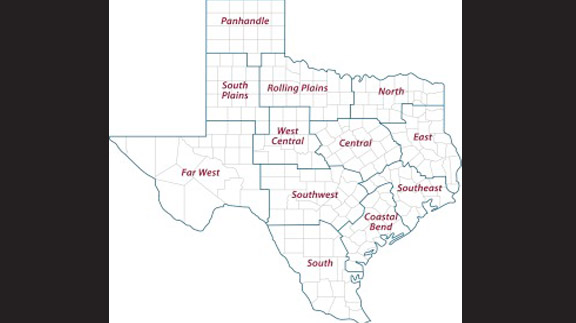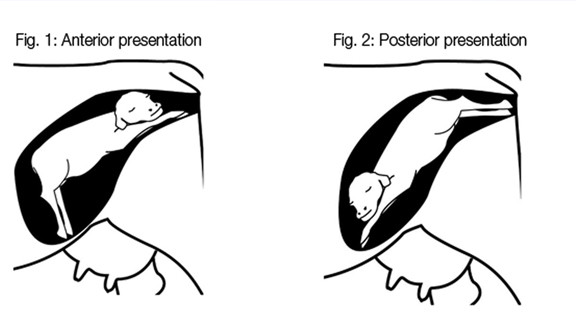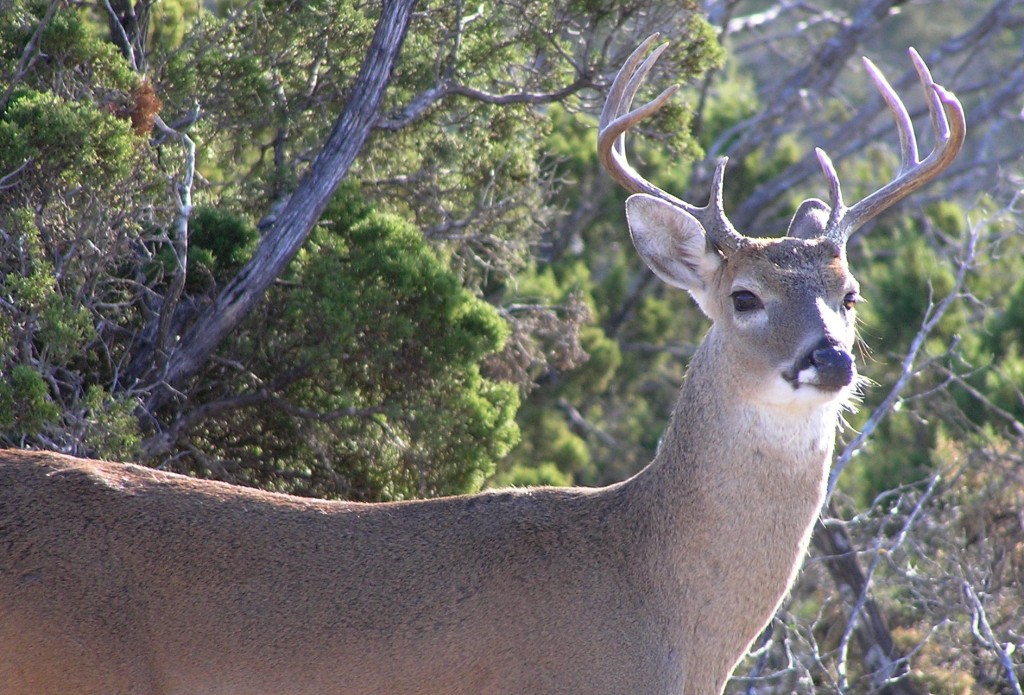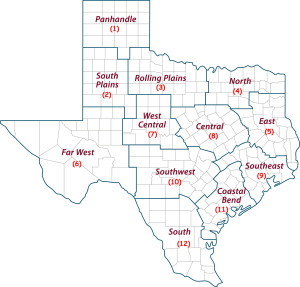Farm & Ranch
Texas crop, weather report for Nov. 24, 2015

By: Robert Burns
AgriLife Expert: 2015 is ‘jubilee’ year for deer hunting
Writer: Robert Burns, 903-834-6191, rd-burns@tamu.edu
COLLEGE STATION – Thanks to plenty of rain at the right times, the 2015 hunting season has been a “jubilee year” for the white-tailed deer crop, according to a Texas A&M AgriLife Extension Service wildlife specialist.
“The deer crop this year has been fantastic,” said Dr. Jim Cathey, AgriLife Extension wildlife and fisheries program leader at College Station. “There are a lot of happy hunters out there.”
Download or preview a two minute MP3 audio version of this report
The economic impact in Texas for hunting was $3.65 billion in 2011, a drought year, and the most recent year for which he has statistics, Cathey said.
“Of that, deer hunting alone counts for $2.16 billion,” he said. “So it’s a pretty important economic driver for our state and wildlife conservation in Texas.”
Cathey noted that it’s been a very good year for other types of hunting, particularly quail, as numbers are back up.
Cathey noted that because 2011 was a drought year, which meant poorer crops of deer and other game animals, he would expect the economic impact for this year to be better.
“We should probably have brand new numbers within a year,” he said. “But I can’t say they will be higher because everything depends on license sales and related items. But drought or not, it’s definitely worth getting the license, not only for the importance of going out there and enjoying wildlife recreation but for the contribution the hunter conservationist makes back into the management of wildlife.”
AgriLife Extension district reporters compiled the following summaries:
Central: Crops, soil moisture, rangeland, pastures and livestock were all rated as being in good condition throughout the region. However, in many areas saturated soils were expected to delay wheat planting another 10 to 14 days. Stock-water tanks were full. Some producers were still harvesting cotton. Some corn and forage silage still needed to be harvested as well. Growing conditions remain good. The condition of pecan crops remained mixed.
Coastal Bend: The region received more rain, which was welcome as it fortified soil moisture levels going into winter. Winter pasture planting was completed. Some producers were applying fertilizer on drier fields. The first frost occurred in the northern portion of the reporting area. The pecan harvest continued, with good yields in improved orchards. Livestock market prices dipped. Cattle were in good condition.
East: The region received from 1 inch to 3 inches of rain, saturating already wet fields and causing flooding in some areas. Henderson County producers had to contend with flood-related issues on roads, fences and corrals. However, the moisture and cooler temperatures improved winter forages. Some producers were seeing slow growth of forages due to delayed planting caused by the dry weather in mid-October and early November. Some areas reported the first freeze Nov. 21-22, which caused warm-season grasses to finally enter dormancy and allow cool grasses to grow. Cattle were mostly in good condition. Producers were supplementing livestock with feed and hay. Hay quality was poor. Most spring-born calves were marketed. Fall calving was in progress. Marketing of cull/market cows continued. Feral hogs continued to be a problem in many areas.
Far West: The entire region had warm days with cool to cold nights. El Paso County had its first freeze, which sped up the opening of pecan shucks. The freeze also sent onion and alfalfa crops into dormancy. Ward and Culberson counties had rain showers. High winds from passing of cold fronts dried out topsoils but also increased high wildfire danger. Cotton harvest proceeded at full tilt and was expected to be finished soon. Farmers continued sowing winter wheat and already emerged fields looked good — with the exception of a few areas where soils were deficient in nitrogen due to standing water. Producers were wrapping up fall cattle work, with some cull cows being shipped and others being fattened up for sale early next year. Pastures were green with winter weeds. Trees, except for mesquite, were starting to turn color. Topsoil and subsoil moisture remained adequate.
North: Topsoil moisture varied from adequate to surplus. Some areas received from 0.5 inch to 2 inches or rain. Wheat fields and pastures were wet and muddy. Wheat stands were rated as fair to average, but late planting due to dry conditions delayed grazing. Warm-season grasses in rangeland and pastures conditions were declining due to colder weather, but winter grasses and legumes were coming on. Many ranchers were starting to feed hay and provide some supplemental protein. Livestock were in good condition. Wild hogs were active.
Panhandle: Temperatures were near average. Severe weather early in the reporting period brought rain, hail, high winds and tornados to some areas. Soil moisture continued to be rated mostly adequate. Collingsworth County cotton yields continued to be average to above average, but grades were coming in low. Much of the irrigated cotton crop was harvested. Deaf Smith producers had all but wrapped up harvesting of corn, most grain sorghum and hay. The winter wheat crop there was looking good despite some disease issues already appearing in early planted wheat. Producers continued planting some wheat behind late corn and some harvested sorghum fields. Manure spreading and fertilizing for next year was ongoing. Stocker cattle were being placed on wheat pasture in increasing numbers. Gray County had tornados. Hansford County rain slowed down cotton harvesting, but early reports indicated quality will be lower than anticipated. Lipscomb County had storm damage in some areas. In Moore County, the grain harvest was almost completed, while the cotton harvest continued in full swing. Randall County had an early taste of winter weather with 60 mph winds all day on Nov. 16. Fieldwork was delayed due to about 1 inch of rain and the extremely windy conditions. Wheeler County ranchers were providing supplemental protein to cow herds. A killing frost allowed cotton producers to begin harvesting if they had not utilized defoliants. Wheat was improving with recent moisture.
Rolling Plains: Some areas received from 0.5 to 1 inch of rain. Wheat planting continued where possible under largely favorable but wet conditions. Some areas were about 70 percent planted. The cotton harvest was delayed by wet field conditions but should was expected to resume by Thanksgiving. Rangeland, pastures and livestock were in good condition. Producers were able to put only limited numbers of stocker calves on earlier-planted wheat pastures due to wet conditions and late planting.
South: The region continued to have warm days and cool nights. No rainfall was reported anywhere in the region. Soil moisture was adequate throughout the region. In the northern part of the region, harvesting of peanuts continued. Armyworms were found in winter forages, and the first freeze of the year occurred over the weekend of Nov. 21-22. Wheat and oats were planted, with the most fields already emerged. Forage quality continued to improve, and less supplemental feeding of beef cattle herds was required. In the eastern part of the region, beef cattle producers were actively marketing calves and culling cows prior to winter. Rangeland and pastures remained in good condition. In the western part of the region, spinach harvesting was active, with the cro in different stages of maturity throughout the area. Baby-leaf spinach harvesting for the fresh market was particularly active. Cabbage crops also made good progress. With good grazing available, livestock on native range and pastures continued to do well. No supplemental feeding was needed. Onions progressed well, and oats and wheat emerged and were making good progress. In the southern part of the region, sugarcane harvesting was underway in Hidalgo County. Fall vegetable crops progressed well in Starr County. Rangeland and pastures remained in good condition throughout the area.
South Plains: Many areas had their first hard freeze along with some rain. Floyd County received 0.5 inches of rain and very high winds early in the week, which kept farmers out of fields for a day or two. Otherwise, they continued to wrap up the cotton and grain harvests. Most expected to finish by Thanksgiving. In Cochran County, soils were drying out from lack of moisture and high winds. The cotton and grain sorghum harvests were ongoing. Producers were still planting winter wheat. Pastures and rangeland were in good condition. Lubbock County received rain on Nov. 16. Amounts varied, with heavier rain on the eastern part of the county. The city of Slaton got 0.9 inches. A killing freeze was finally registered for Lubbock: 28 degrees on Nov. 21 and 25 degrees on Nov. 22. Harvest and ginning were proceeding well. Stocker cattle on wheat pasture look good. In Garza County, cotton harvesting continued despite 0.3 inches of rain early in the week. Fields dried out within a couple of days thanks to moderate winds, and harvest resumed. Rangeland and pastures were mostly in good condition. Producers provide supplemental feed to cattle in areas that had been more intensively grazed and on the days where temperatures were below freezing. Scurry County also reported their first freeze on Nov. 23. Winter pasture planting was completed.
Southeast: Soil-moisture levels throughout the region varied widely, but were mostly in the adequate to surplus range, with adequate being the most common. Walker County reported 100 percent adequate soil moisture. Rangeland and pasture ratings were mostly fair to good, with fair ratings being the most common. After recent rains, Waller County pastures were looking much better. There were some reports of armyworm activity in small grain winter pastures. Brazoria County had standing water in fields. Chambers County also had very wet conditions. Most fieldwork may be delayed until spring by the wet soils.
Southwest: The pecan harvest continued, and farmers were still planting winter crops as temperatures began to fall. Livestock were in fair condition. The deer hunting season has been one of the best in many years, with quality antlers and great deer movements. Pastures were improving.
West Central: The region had mild days with cold nights. Some areas had their first light frost. A few areas received isolated showers. Soil moisture was rated as good in most counties. The cotton harvest continued, with about half of the crop out of the fields. Irrigated cotton yields were good, and dryland yields fair. Quality grades decreased due to the wet conditions. Winter wheat was off to a good start thanks to the recent rains. No insect problems were reported. Producers continued to plant winter wheat behind cotton harvesting. The sesame harvest began. Range and pasture were in great condition and providing some grazing. Winter weeds and grasses were also coming on strong. Livestock were in fair to good condition going into winter. Cattle prices were still holding steady. The pecan harvest was underway.
-30-
Find more stories, photos, videos and audio at http://today.agrilife.org
Farm & Ranch
What to expect when your cow’s expecting

Overweight cattle and cattle turned out on lush legumes with high concentration are at risk as well. In this case, an epidural anesthetic is usually necessary. The tissue will need to be replaced and sutured in place. Vaginal sutures will need to be removed prior to calving.
Toxemia happens when cattle are exposed to low nutrition during the last two months of pregnancy. Cows that are overly fat and/or carrying twins are at higher risk. Cows with toxemia become depressed, stop eating and often stand off away from the herd. You will notice some have the scent of acetone on their breath. As the condition worsens, the cow may develop muscle tremors. Treatment for toxemia is IV glucose, B vitamins or propylene glycol given by oral drench.
During calving there are a number of problems that could occur. Those include dystocia, bruises and lacerations to the birth canal, uterine prolapse, milk fever, retained placenta and grass tetany.
According to the Beef Cattle Handbook, a product of Extension Beef Cattle Resource Committee Adapted from the Cattle Producer’s Library, at any time a cow is unable to deliver her calf, a dystocia has occurred. There are many things a producer can do to reduce this incidence. With heifers, lot those with small pelvic areas before breeding. Select bulls based on their birth weight, not on their relative size. Ultimately use bulls that will produce small birth-weight calves. When calving first-calf heifers separate them from cows, at best into small groups. Producers will want to provide surveillance over the heifers on a 24 hour basis. Some tips include restricting the calving to 42 to 60 days. That will enable personal focus for a short, intense calving period. Also feeding at night between 9 and 11 p.m. will cause more animals to calve during daylight hours.
If problems arise and a cow hasn’t shown progress in 60 to 90 minutes, it’s time for the producers to step in. Signs of an abnormal delivery are the head only, the head and one leg, one leg alone or the tail. At this point it is best to contain the animal in a squeeze chute or small pen. A calf can only deliver one of two ways: both front feet followed by the head or both back feet out together. Once constrained, using ample lubrication, a producer can reach in and move the calf to one of the two correct positions. If unable to do so, a veterinarian should be called. The top problems include not getting the head out with front feet, having a calf too big to deliver through the mother’s birth canal resulting in hip lock and abnormal breach in which the tail is the only part of the calf visible through the vulva. If all goes well and pulling the calf is suggested, direct traction down and away from the birth canal. Do not pull straight out behind the cow. If two men are unable to pull the calf using the OB chains or when using the calf puller, do not use excessive force. It will not deliver the calf. Odds are the cows birth canal is too small for the calf and will result in a c-section.
Keep in mind bruises, lacerations and rupture of the birth canal are possible during a difficult birth. Rough handling of the calf or maternal tissues and careless use of obstetrical instruments during calving add danger. This is typical when a cow is in labor several hours with a dry, non-lubricated birth canal.
Cows with difficult delivery and trauma to the tissue and birth canal may have damage to the nerves and spinal cord or hips that supply the legs. This results in abnormal leg function. In some cases, while pulling a calf, excessive force was used and the middle lower pelvis bones were fractured. At this point steroids are administered to help with swelling and nerve healing. In bad cases were the cows are unable to stand, they need to be hoisted to their feet twice a day.
In older cows producers may see difficulty in birth injury or irritation of the external birth canal and severe straining, retained placenta and loose uterine attachment in the abdominal cavity called uterine prolapse. When noticed, this condition needs immediate action. Apply material to uterine wall to saturate fluid ASAP. You can use sulfaurea powder, urea powder or even sugar. Replace the uterus immediately or call your veterinarian. Without properly replacing the uterine horns, prolapse will reoccur.
Usually the placenta is passed in three to eight hours. If the placenta hasn’t passed in eight to 12 hours of calving, the placenta is retained and the cows must be treated. A number of reasons lead to retained placenta: dystocia, c-sections, fetotomy, twinning or abortion along with other infectious diseases. Even feed deficiencies, malnutrition, low carotene, vitamin A, iodine, selenium and vitamin E can be to blame. To treat, use slight, manual force and gently pull on the placenta. If it resists, stop and pack the uterus with boluses or fluid douches to keep antibiotics in the uterus. As with prolapse, be sure to use proper hygiene when treating the uterus or worse problems will occur.
Another condition parallel with cows with age, number of calves and dairy or mixed breeds is milk fever. This condition happens when a cow starting to produce milk is unable to remove calcium from her bones quickly enough. If blood levels of calcium fall below the minimal level, the muscles of the body are unable to function. This leaves the cow almost crippled, comatose and dead. High blood levels of estrogen inhibit calcium mobilization; this may be a factor on pastures that are high in legumes. Usually a slow administer of IV calcium is given. 300 to 500 ml of a commercial calcium solution is given over 20 to 30 minutes.
Lastly, grass tetany poses as an issue to cows calving. It is similar to milk fever, but in this instance cattle have heavy post-calving lactation and lose large amounts of magnesium in their milk. Most types of mixed pasture grasses are low in magnesium. If cows are exposed to cold weather or stress during early lactation, their blood levels may drop low enough to cause grass tetany. At that point an IV of magnesium is given with calcium. Treatment is not as effective as with milk fever and in many cases, animals do not respond.
This article was originally published in the January 2016 issue of North Texas Farm & Ranch.
Farm & Ranch
Managing Show Cattle Through The Winter

By Heather Welper
Husband and wife duo, Heather and Calvin Welper, are the Co-Owners and Operators or Two C Livestock, located in Valley View, Texas.
The pair’s operation has a show cattle focus where they raise and sell purebred heifers of all breeds and club calf Hereford steers.
When it comes to show cattle, the Welpers know a thing or two including how to prepare for the cold winter months and the Texas major show season run.
To read more, pick up a copy of the November edition of North Texas Farm & Ranch magazine, available digitally and in print. To subscribe by mail, call 940-872-5922.

Farm & Ranch
Double M Ranch & Rescue

By Hannah Claxton, Editor
As the sun rises each day, so do the dozens of mouths that Meghan McGovern is responsible for getting fed. Rather than the sounds of a rooster crowing, McGovern hears the bellows and bleats of a variety of exotic deer, the chortle of kangaroos, the grunts of water buffaloes, and the chirps of a lemur.
Nestled against the banks of the Red River, the Double M Ranch and Rescue, with its high game fences and deer sprinkling the landscape,s its in stark contrast to the surrounding ranches.
“Having deer is kind of like eating potato chips- you can never actually have just one,” said McGovern with a laugh.
McGovern has several herds to take care of- fallow deer, axis deer, water buffalo, goats, and bison. In smaller numbers, there’s also a few kangaroos, a lemur, a potbelly pig, a pair of zebras, a watusi, and a few horses.
To read more, pick up a copy of the November edition of North Texas Farm & Ranch magazine, available digitally and in print. To subscribe by mail, call 940-872-5922.

-

 Country Lifestyles2 years ago
Country Lifestyles2 years agoScott & Stacey Schumacher: A Growth Mindset
-

 Country Lifestyles8 years ago
Country Lifestyles8 years agoStyle Your Profile – What your style cowboy hat says about you and new trends in 2017
-

 HOME8 years ago
HOME8 years agoGrazing North Texas – Wilman Lovegrass
-

 Outdoor10 years ago
Outdoor10 years agoButtercup or Primrose?
-

 Country Lifestyles9 years ago
Country Lifestyles9 years agoJune 2016 Profile – The man behind the mic: Bob Tallman
-

 Country Lifestyles8 years ago
Country Lifestyles8 years agoDecember 2016 Profile, Rusty Riddle – The Riddle Way
-

 Country Lifestyles5 years ago
Country Lifestyles5 years agoAmber Crawford, Breakaway Roper
-

 Horsefeathers11 years ago
Horsefeathers11 years agoMount Scott: Country Humor with David Gregory






